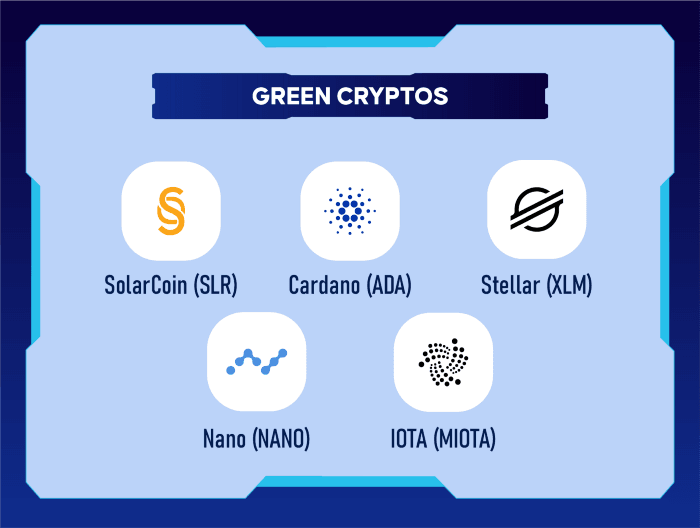Stirring the climate-change cauldron with crypto, bitcoin

By: Sruthi Menon
The growing popularity of cryptocurrency in recent years has not been without concerns over its environmental and ecological impact.
Cryptocurrency mining, the procss of using computer power to verify crypto transactions and create new coins, has long been a source of discussion on environmental harm. Overburdened power grids and air quality concerns have plagued crypto-mining communities across the world.
Major crypto activity, for now, is done on blockchains that require enormous amounts of energy for storing and verifying transactions. According to Digiconomist, a website that tracks cryptocurrency, Bitcoin uses an estimated 200 terawatt-hours of energy per year, which could be more than the energy used by some countries like Belgium, Chile or even Argentina!
The impact
The computing power required to mine coins is astronomical. But what is this energy technically used for?
The verification process of blockchains requires solving complex equations by computers located all over the world a process called mining that utilizes extensive use of energy. Much of crypto’s environmental impact stems from the energy used by computers to generate new digital tokens. The energy use is driven by a process called ‘proof of work.’

The energy used for this comes from fossil fuel — coal, which accounts for about 40% of the mining power. This evokes criticism that the energy demands of Bitcoin and several other cryptocurrencies are unsustainable and pose a threat to the environment.
Not just mining, but another big part of the environmental cost of cryptocurrency is disposing of old mining hardware, which creates toxic electronic waste.
On May 12, 2021, Tesla CEO Elon Musk announced that the company would no longer accept bitcoin as payment until he is sure that the cryptocurrency could be produced sustainably. This was not just the case with Tesla. So far, approximately 35 companies and individuals working in the cryptocurrency industry, energy sector and prominent non-governmental organizations have come together to form a group called the Crypto Climate Accord (CCA), which aims to make the industry of cryptocurrency consume 100% clean energy by 2025.
Although crypto advocates dispute the claim that crypto mining is harmful to the environment, supporters of crypto point out that using fiat currency also consumes a lot of energy.
Bitcoin’s proponents also argue that its energy consumption is nonessential when compared with global energy production and waste such as processing gold and steel.
However, there is more to be said on the subject. Some experts claim blockchain technology can be used to help combat climate change.
Proof of work vs Proof of stake
We now know that cryptocurrencies such as bitcoin are mined through a method called ‘proof of work’, which requires a lot of energy. Some new cryptocurrencies strive to consume less energy by utilizing other methods known as ‘proof of stake’ where a miner can validate transactions on the blockchain, based upon the number of coins that the miner holds instead of by solving an equation. This validation process does not require the same extreme computing power.
Ethereum, a popular cryptocurrency next to Bitcoin, plans to reduce its energy consumption by 99.95% within months once it completes the transition to a new infrastructure model. The cryptocurrency is set to cut its environmental impact from Bitcoin’s ‘proof of work’ mining model to the ‘proof of stake’ validation process.
Green cryptocurrencies
As of 2019, more than 140 research projects and startups had begun studying, assessing, and deploying blockchain-based solutions to improve energy industry processes. This brings us to the emerging technology of green cryptocurrencies that are based on new mechanisms that reduce the carbon footprint of blockchain technology.
In addition to Ethereum, many other lesser-known green cryptocurrencies hope to break into the crypto market with an emphasis on sustainability. One among them is Cardano, a sustainable cryptocurrency created by the co-founder of Ethereum. Cardano’s transactions are processed at a rate of 1,000 per second compared to Bitcoin’s seven. This cryptocurrency does all of this based on sustainable, proof-of-stake technology that makes it one of the most popular green cryptocurrencies today.
SolarCoin (SLR), Cardano (ADA), Stellar (XLM), Nano (NANO) and IOTA (MIOTA) are some of the green cryptocurrencies that have a lower environmental impact.

Future away from fossil fuels
Incentivizing environment-friendly practices through automated systems is possible if blockchains and oracle networks are combined to draw real-world data into the blockchain.
According to a report by Chainlink Labs in April 2022, blockchain technology will play a key role in combating climate change by offering solutions for clean energy and enhanced automation.
The report labels ‘hybrid smart contracts’ as the new backend framework necessary for building clean energy solutions. The framework uses blockchain technology and smart contracts to record, track, and settle multi-party processes.
It also uses oracles — or interoperability solutions for blockchains built on smart contracts, to integrate data and non-blockchain infrastructure into the contracts.
Incentive programs could motivate individuals to reduce their emissions, according to the report. Consumers could also be rewarded with crypto or NFTs for meeting the requirements of a blockchain-based contract designed to minimize their carbon footprint.
The future of cryptocurrency looks promising, especially with the new emphasis on sustainability being followed by industry leaders like Ethereum. It is a welcome change that not all cryptocurrencies today are harming the environment, in fact, some are even helping.
In a nutshell, blockchain technology can be used to make clean energy investments more efficient and the goal must be to prioritize focusing on green technology, offsetting Bitcoin carbon emissions, and leveraging renewable energy.
Updated on: 24th November, 2025 3:34 PM